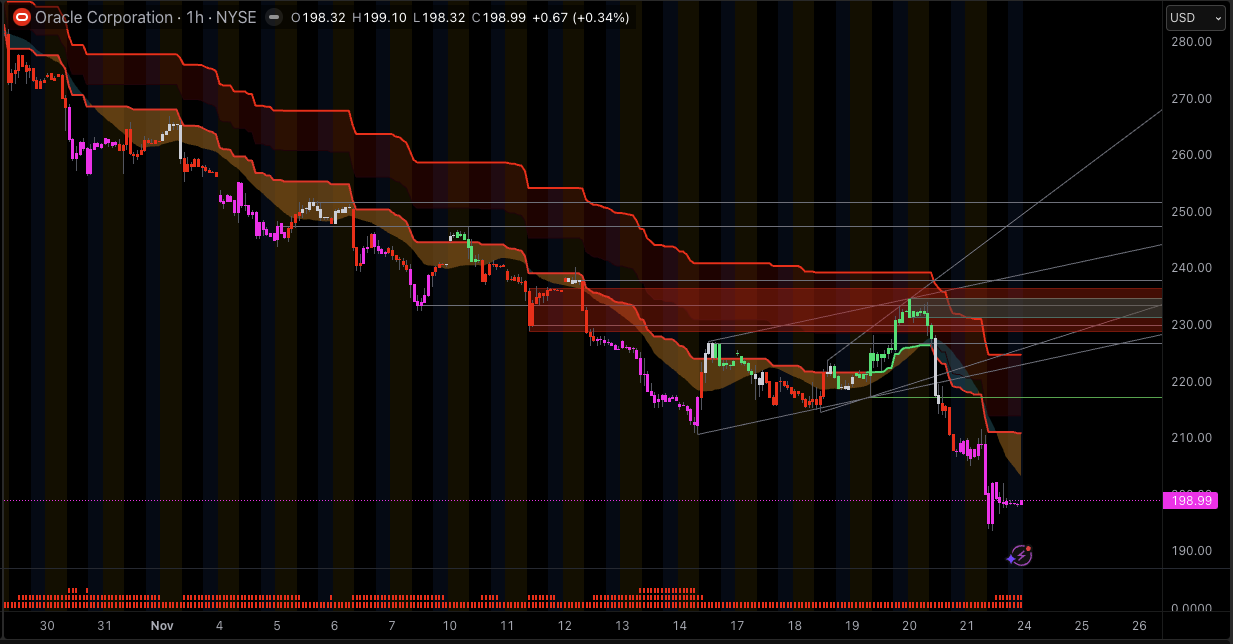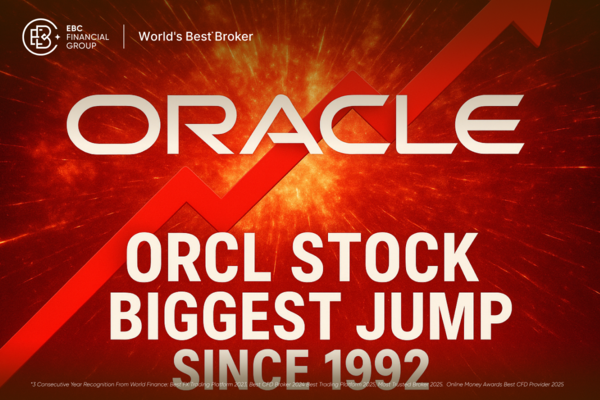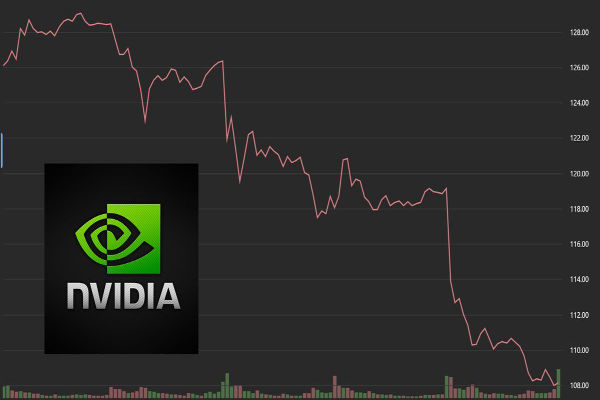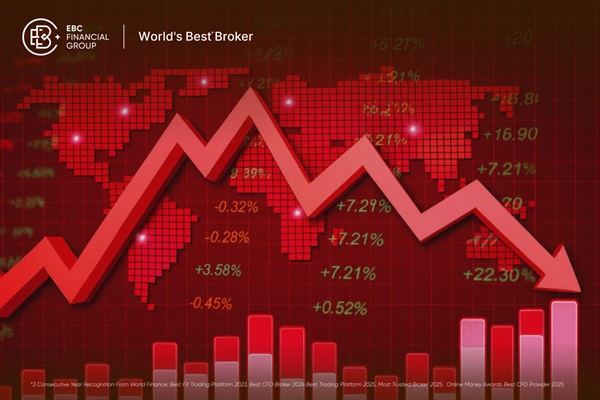Oracle’s recent share price decline has become a focal point for global investors. After a powerful rally supported by enthusiasm around its AI and cloud strategy, the stock has given back a significant portion of those gains as the market reassesses earnings, spending plans and valuation.
This move has raised important questions about what is driving the weakness in ORCL and what the latest technical signals are saying about the trend.
After hitting an all-time high around $345.72 in early September 2025, Oracle (ORCL) has dropped to about $198-200 per share as of November 2025, more than 40% below its peak.
Despite that drop, the company is still posting double-digit revenue growth and pitching one of the biggest AI cloud roadmaps in the market. So why is Oracle stock falling this hard, and what are the charts telling traders right now?
Why is Oracle Stock Dropping?
In simple terms, Oracle has run into a classic “expectations vs reality” problem, amplified by big AI spending, rising debt, high valuation and a sharp technical breakdown.
The current slide in ORCL is mainly driven by:
How Has Oracle Stock Performed?
Last Week
Oracle closed around $219-226 in mid-November and then slid to about $198.76 by 21 November. That’s roughly a 10% drop in less than a week as selling accelerated after more AI-related macro worries and technical downgrades.
 Last Month
Last Month
According to MoneyWeek and The Economic Times, Oracle shares are down about 25-30% in the month to mid-November, falling from above $345 to the low-$230s and then further lower.
 Last 12 months
Last 12 months
Even after this correction, Oracle is still up strongly versus a year ago. MoneyWeek notes that shares had gained around 36% in a single session on 10 September after a huge OpenAI deal was announced, helping push the stock towards a near $1 trillion valuation before the reversal.

So the current fall is less about a broken business, and more about a hot stock resetting after a huge AI-driven rally.
Fundamental Reasons Behind the Oracle Stock Drop
1. Earnings miss and margin pressure vs sky-high expectations
Oracle’s latest quarter showed:
On paper, that is a solid quarter. But it was not enough for a stock priced at over 50 times trailing earnings and roughly 30+ times forward earnings, even after the pullback.
Markets are focused on:
A Fortune piece notes that the stock fell as much as 8% in a single session after Oracle presented a long-range AI outlook that investors feared may be hard to fulfil profitably.
In short: Oracle is still growing, but the bar set by AI hype was extremely high.
2. AI capex, rising debt and worries about “hidden” costs
Oracle is spending aggressively to build AI data centers packed with Nvidia chips and its own cloud infrastructure.
Recent analysis shows:
Investors now worry about:
This is happening against a backdrop where AI spending itself is under scrutiny. An Investing.com market note describes a “mini AI bear market” within the broader indices as traders question the pace and funding of AI capex.
3. High-profile critics and transparency questions
This is where the “big faces blaming Oracle” narrative comes in, and it is important to separate opinion from fact.
a) AI backlog and “real demand”
MoneyWeek quotes D.A. Davidson analyst Gil Luria, who told CNBC Oracle was engaging in “bad behaviour in the AI buildout” and that part of its reported AI order backlog may not represent firm, realistic demand.
His concern is that some of the multi-hundred-billion-dollar OpenAI commitments are flexible usage frameworks rather than guaranteed purchases, which could make the backlog look stronger than it truly is.
This does not mean Oracle is committing fraud. It does mean some analysts think the way backlog is framed is too optimistic, and those headlines alone can hurt sentiment.
b) Michael Burry and AI accounting
“Big Short” investor Michael Burry has gone further. In recent comments covered by MarketWatch and other outlets, he argues that big AI players including Oracle and Meta use depreciation schedules of 5–6 years for AI computing and networking equipment that might realistically become obsolete in 2–3 years.
According to Burry, that:
Overstates earnings by understating depreciation.
Could lead to about $176 billion in overstated profits from 2026–2028 across large tech companies.
Might mean Oracle’s earnings are overstated by around 27%, in his estimate.
He has used strong language, calling this a modern form of financial fraud. That is his view, not a legal finding. So far:
Still, when someone with Burry’s reputation says a company’s accounting “hides the brutal truth,” many short-term traders listen, and that can add selling pressure.
4. Leadership change and insider selling
In September 2025 Oracle announced that long-time CEO Safra Catz would move to Executive Vice Chair, and insiders Clay Magouyrk and Mike Sicilia would become co-CEOs.
Shortly after his promotion, Magouyrk sold around 40,000 shares, according to coverage in The Economic Times. That kind of sale after a big AI rally can be interpreted as simple diversification, but some investors read it as a lack of confidence in near-term upside.
The combination of a new leadership structure, heavy compensation in stock options, and insider selling at high levels feeds the idea that Oracle itself sees the stock as rich.
5. Sector rotation and AI bubble worries
Oracle is not alone. MoneyWeek notes that eight of the biggest AI-related stocks, including Nvidia, Meta, Palantir and Oracle, lost about $800 billion in market value in one week in early November as investors questioned high valuations and debt-funded AI spending.
At the index level, AI infrastructure names have become a crowded trade. When sentiment flips, funds rotate out aggressively into other sectors like healthcare, materials or consumer stocks.
So part of Oracle’s slide is simply the cost of being one of the poster children for the AI capex boom.
Technical view: what the ORCL chart is saying
Daily technicals for ORCL as of 21 November 2025 (21:00 GMT), using Investing.com data:
| Indicator |
Latest Value* |
Signal (Daily) |
What It Suggests |
| Price (close) |
$198.76 |
– |
Sharp drop from $345; now near recent lows |
| RSI (14) |
31.27 |
Sell / near oversold |
Weak momentum; close to oversold level (30) |
| MACD (12,26) |
-6.36 |
Sell |
Bearish momentum; MACD below signal line |
| ADX (14) |
46.18 |
Sell |
Strong downtrend, not just a pullback |
| ATR (14) |
5.75 |
High volatility |
Wide daily swings; tighter stops riskier |
| Williams %R (14) |
-87.7 |
Oversold |
Price closing near recent lows |
| CCI (14) |
-84.7 |
Sell |
Confirms negative momentum |
| MA20 (simple) |
$213.71 |
Sell |
Price below short-term trend |
| MA50 (simple) |
$217.83 |
Sell |
Medium-term trend turning down |
| MA100 (simple) |
$229.66 |
Sell |
Trading well below intermediate trend |
| MA200 (simple) |
$255.40 |
Sell |
Long-term trend broken; far below 200-day MA |
This technical summary rates Oracle as “Strong Sell”, with 0 buy vs 8 sell signals on indicators and 0 buy vs 12 sell signals on moving averages.
Support and resistance zones
Using current price, recent lows and daily pivot points:
| Level / Zone |
Type |
Why It Matters |
| $192–195 |
Near-term support |
Cluster of pivot S1/S2 levels and recent intraday lows around $193–194 |
| $180 |
Secondary support |
Round-number level; cited by some analysts as the next downside target if selling continues |
| $199–200 |
Pivot area |
Common daily pivot zone; short-term buyers and sellers often clash here |
| $213–215 |
First resistance |
Near the 20-day moving average; former support now acting as resistance |
| $218–220 |
Next resistance |
Close to the 50-day average and the recent breakdown zone |
| $255+ |
Major resistance |
Around the 200-day moving average; a major trend test if price rallies that far |
From our technical analysts perspective, ORCL is:
In a confirmed daily downtrend.
Oversold to near-oversold, but not yet showing a strong bullish reversal signal on the daily timeframe.
Trading below all key moving averages, which often keeps short-term trend followers on the short side or flat.
What bulls and bears are watching now
Bulls want to see:
Bears are focused on:
How traders might approach Oracle stock now
We see three broad ways traders tend to think about a move like this:
Short-term swing trading:
Trend-following / momentum:
Long-term positioning:
Longer-horizon investors watch fundamentals: AI revenue growth, free cash flow, leverage, and any response Oracle gives to accounting criticisms.
If you trade ORCL or other shares via EBC, remember that CFDs and leveraged products carry a high risk of rapid loss. Always size positions and stops to reflect how volatile the stock is right now.
Frequently Asked Questions (FAQ)
1. Why is Oracle stock falling today?
Mainly weaker sentiment around AI spending, concerns about the cost of Oracle’s AI cloud expansion, and a bearish chart setup. Headlines tied to AI demand are adding short-term volatility.
2. Did the latest earnings cause Oracle’s stock crash?
Yes, they helped trigger it. Revenue and guidance fell a bit short of high AI-driven expectations, and worries about heavy AI capex and debt amplified the selloff.
3. Are the claims that Oracle is “hiding facts” true?
They’re unproven. Analysts have criticised Oracle’s AI backlog and hardware accounting, but no fraud findings or regulatory actions exist. The criticism mainly affects sentiment.
4. Is Oracle stock oversold now?
Indicators like RSI are near oversold levels, but the trend is still down and a clear reversal hasn’t formed. Many traders wait for prices to retake the 20-day or 50-day moving averages.
Final thoughts
Oracle is dealing with a painful but classic reset: big AI promises, heavy capex and a rich valuation collided with more modest near-term numbers, rising debt and very public scepticism from some well-known voices.
The core business remains profitable, the AI cloud pipeline is real, and management is clearly all-in on this strategy. At the same time, the market is now demanding proof in cash flow and margins, not just announcements and huge backlog figures.
For traders and investors, the message is clear: respect both the fundamentals and the technicals. ORCL’s story is far from over, but the easy AI-hype phase is behind it. From here, every quarter and every chart level will matter.
Disclaimer: This material is for general information only and does not constitute financial, investment or trading advice. Any trading decision should be based on your own judgement and risk tolerance.
























